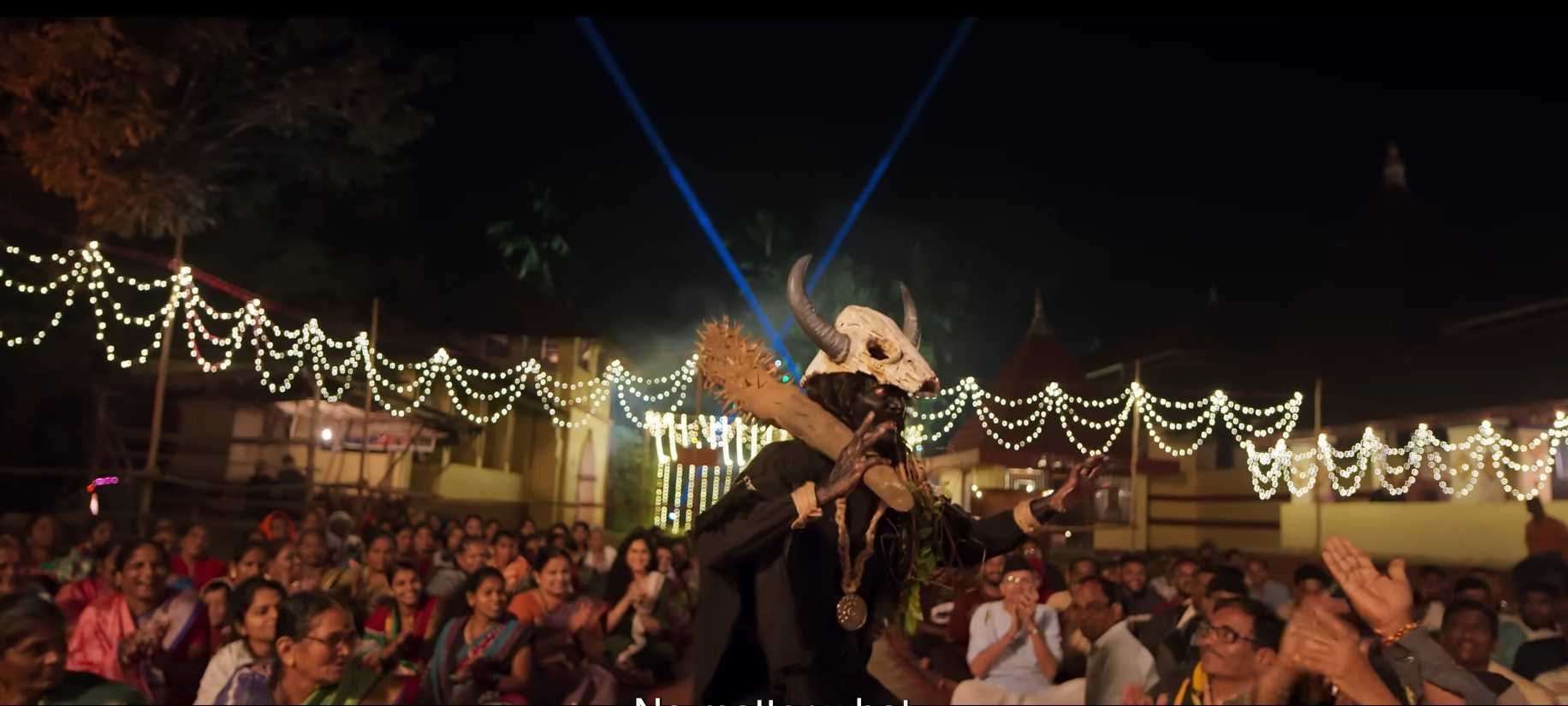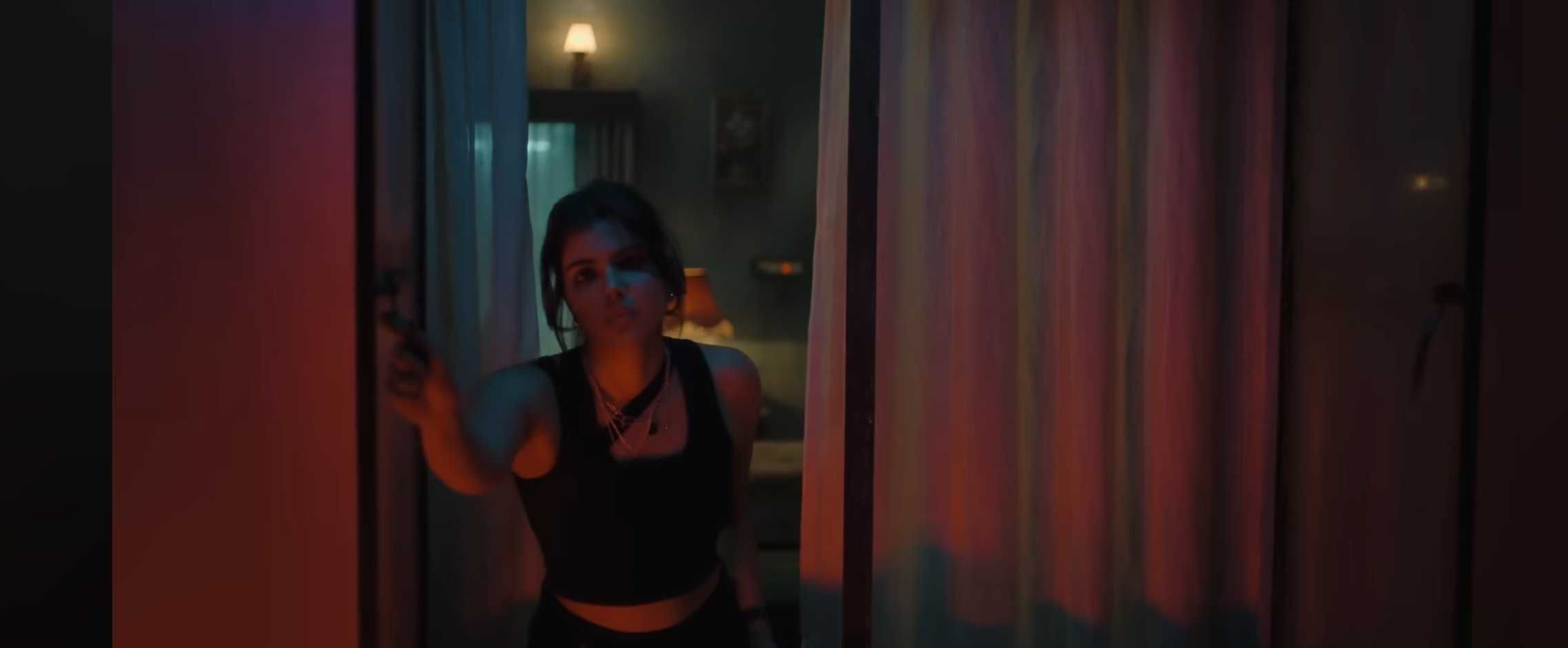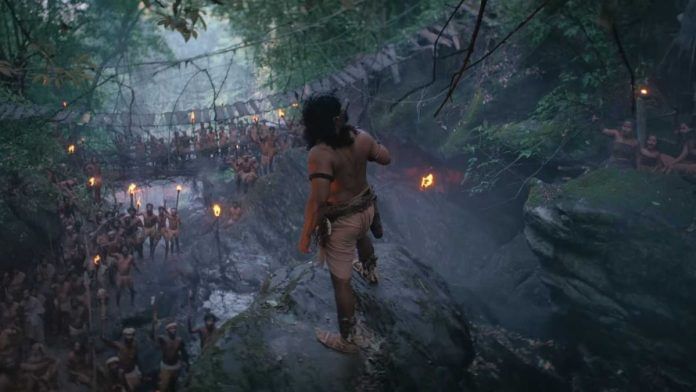New Delhi: Centuries ago, during the reign of the Kadamba dynasty, a tribe from Kantara led by Berme (Rishab Shetty) travels to Bangra to learn the secrets of the Kadamba kingdom’s wealth, military prowess, and trade. As the story progresses, the fantasy gives way to questions about the exploitation of tribal people and land resources — which remain valid even today, given the rapid industrialisation that threatens the way of life of many tribes across India.
Kantara is not the only mythical, fantastical film that has brought tribes and folklore to the front of mass entertainment. Earlier in August, Lokah: Chapter 1-Chandra, the first Malayalam superhero film led by a woman, broke box office records by reimagining the tale of yakshi. In the Marathi cinema, Dashavatar blended together myth and reality, past and present, to throw spotlight on a community’s vulnerable existence in the Konkan region. Each of these three films has woven together folklores and community practices to create a fantastical world that blends contemporary issues with rich legacies.
These have also emerged as one of the highest grossing films in the respective languages they are made in. Dashavatar, which released on 12 September, made Rs 27.94 crore, while Kantara: Chapter 1, which is still running in theatres, has grossed Rs 694 crore since two weeks of its release. Lokah: Chapter 1 – Chandra collected Rs 302.5 crores worldwide and is set to release on OTT now.
“A lot of work is yet to be done. The writing and the making of commercially successful cinema is still in the hands of the privileged section, and tribals are not part of decision-making in these spaces. But the success of the films might be at least the economic incentive for filmmakers to take time and accurately represent tribals, instead of using age-old stereotypes,” said Jeetendra Meena, an academic and tribal activist.
Beyond Hindu mythology
There has been an increase in the number of mythological, albeit Hindu mythological, narratives in movies in the last few years — Nitesh Tiwari’s ambitious two-part Ramayana, to Hanu-Man (2024), Kalki 2898 AD (2024), Kannappa (2025), and Mahavatar Narsimha (2024).
“In the present context, Hindu sentiments, ideology, and myths have become a genre and tactic used for commercial success of movies. This reality has resulted in the rise and normalisation of Hindu mythological movies in languages in India, sometimes at the cost of tribal and non-Brahmanical representation,” said Shruteesh Kannadi, an academic and journalist.
With the blockbuster success of SS Rajamouli’s mytho-fantastical films, the use of legends, fantasy, and myths became staples of cinematic ambitions. While Baahubali begins with showing the hero Shiva (Prabhas) born in a tribal village, it soon becomes regressive in its portrayal of the Kalakeya tribe, which wages war against the Mahishmati kingdom — representing the upper class and caste — in the movie.
Shiva’s tribe sports chunky jewellery with no blouses — a cinematic marker of tribal people — while the other community has blackened faces, wears sleeveless costumes, and speaks in the incomprehensible language called Kilikili. Moreover, while the Kalakeya people converse, the dialogues are not subtitled, indicating that their words are worthless.
Another film by Rajamouli, RRR (2022) showcases a central character from an indigenous community, loosely based on tribal freedom fighter Komaram Bheem. But Rajamouli chooses to overshadow the character’s identity by promoting him as the Hindu god Hanuman. The other protagonist, based on and named after revolutionary Alluri Sitarama Raju, is also portrayed as a reincarnation of lord Ram.
“The movie appropriates the character of Bheem for the Hindutva agenda, by making him like Hanuman, while also erasing the fact that he fought against the Nizams of Hyderabad — an upper class and caste group,” said Meena.
He also added how the symbols of the Bhil community have been appropriated in movies, depending on the stance and story. “It has the sun, half moon along with other symbols, and depending on your religious and political allegiance, symbols are picked up and used.”
This is where movies like Lokah: Chapter 1 – Chandra, Kantara: Chapter 1 and Dashavatar register subtle interventions. While Kantara (2022) conflated indigenous practices with Hindu mythology, particularly in overlaying the Bhoota Kola performances with the Sanskrit hymn Varaha Roopam, the new film turns its gaze to the systemic economic exploitation of tribes by non-tribal entities, be it colonisers or monarchy, and by extension, industrialists and government in contemporary times.
Berme’s rebellion against Bangra’s practice of slavery and exploitation of natural resources to fill its treasury reflects contemporary concerns, as does Berme’s refusal to submit to the king’s writ. In the Bangra marketplace, Berme finds Arab and Portuguese spice traders selling the forest’s produce at vastly higher rates, which indicates how land and resources are sold off to industrialists, at the cost of tribals.
Parallels have been drawn between Kantara and Dashavatar, where the latter focuses on the Konkan region’s ritual folk theatre showcasing the ten incarnations of Lord Vishnu. But a simplistic comparison discredits the cinematic marvel of the Marathi-langiuage film.
Babuli Mestri (Dilip Prabhavalkar), a folk artist, continues to perform despite old age, poverty, and failing health, while his son Madhav (Siddharth Menon), who is educated but unemployed, is caught between leaving the village for work and taking care of his father. A mining company and its local allies enter this fragile balance, promising jobs while threatening the land and its traditions.

The film borrows the symbolism of Vishnu’s incarnations and the local Dashavatar tradition to show how individuals transform themselves in the face of injustice, with folk art becoming a weapon and mythology merging with current politics and the villagers’ resistance. It has parallels to actual protests like the one in Ratnagiri district’s Barsu in 2023, when villagers protested against a proposed oil refinery. The project, six years after its announcement, is still in limbo, after facing criticism from the Opposition and resistance from locals and environmentalists alike.
The social issue of land mining, resulting in Konkan’s ecological and environmental degeneration, is, however, almost oversimplified in the climax. But, despite that the film’s handling of socio-political and ecological issues remain impactful.
Rewriting of existing myths
In Lokah, the subversion takes place at two levels — in de-sexualising the figure of yakshi and making Neeli a tribal girl who eventually becomes the superhero Chandra. In the backstory, an upper-caste king orders his general to kill the tribal children who enter the temple meant only for the monarch.
Neeli, who is bitten by vampires in front of the statue of a headless goddess, gets unexplained powers and kills the king’s army chief and the men who were sent to attack the tribal village.

“I was very particular that Chandra’s moral code should come from a woman rather than from a patriarchal religious figure (Kathanar). In our version, she grows up in an indigenous culture, a nurturing environment connected to nature and animals, and she becomes a force for good because it’s her mother who instructs her to use her powers to protect the vulnerable,” said Santhy Balachandran, co-writer of Lokah, in an interview.
Even the film’s title track and animation sequence pay tribute to tribal cultures as custodians of wisdom, with places of worship carefully envisioned as distinct from mainstream Hindu iconography.
“What’s interesting in Lokah is not just the subaltern world building but the fact that it is led by a female character, and she is shown as a benign form of powerful entity. That makes the deconstruction of majoritarian ideas like patriarchy and casteism even more powerful,” said Kannadi.
Also read: Bangladesh’s first woman director in Oscar race. ‘Wanted characters who help you break barriers’
The battle has just begun
Tribal representation in Indian films has long been fraught with missteps and stereotypes, and even Satyajit Ray couldn’t get it right. His Aranyer Din Ratri (1970) had a blackfaced Simi Garewal playing a tribal woman who is coerced into sex by an upper-caste man.
But with the three films this year alone, there is a glimmer of hope.
“Even in the Tamil film Jai Bhim (2021), which is a well-made film, there are lapses. In the last scene, the lead character sits and reads a newspaper with his legs on the table. And we see a young girl enter and imitate him. Seconds later, the camera focuses on Babasaheb Ambedkar’s frame on the wall. It insinuates that education can fight every social upheaval and challenge, and the pen has replaced land. But tribal existence is never divorced from the question of land,” said Meena.
Jai Bhim portrayed the story of Chandru (Suriya), a lawyer who fights cases for tribal communities, and the life of the Irula tribe, who are on the fringes of the society, surviving on rat meat, and scraping by.
“It also comes down to the lens. The fact that some tribes eat rats is a fact, and in the movie it is not excised, but presented matter-of-factly. That is where the change is necessary. And with newer films, and which also make good money, there is definitely incentive for better representation,” added Meena.
He also mentioned that the success of films like Lokah, Kantara and Dashavatar might pave the path for tribal representation in filmmaking too. Even today, there are barely any tribal actors or makers in commercial filmmaking in India.
“If you account for the audience too, tribals barely make up a tiny percentage. So the success of these films are yet to penetrate the people they are about. But that does not take away from the fact that these are important changes, especially in the medium of films. Let’s hope it is not a medium to advance the careers of the makers, but a beacon of actual change,” said Meena.
(Edited by Aamaan Alam Khan)






